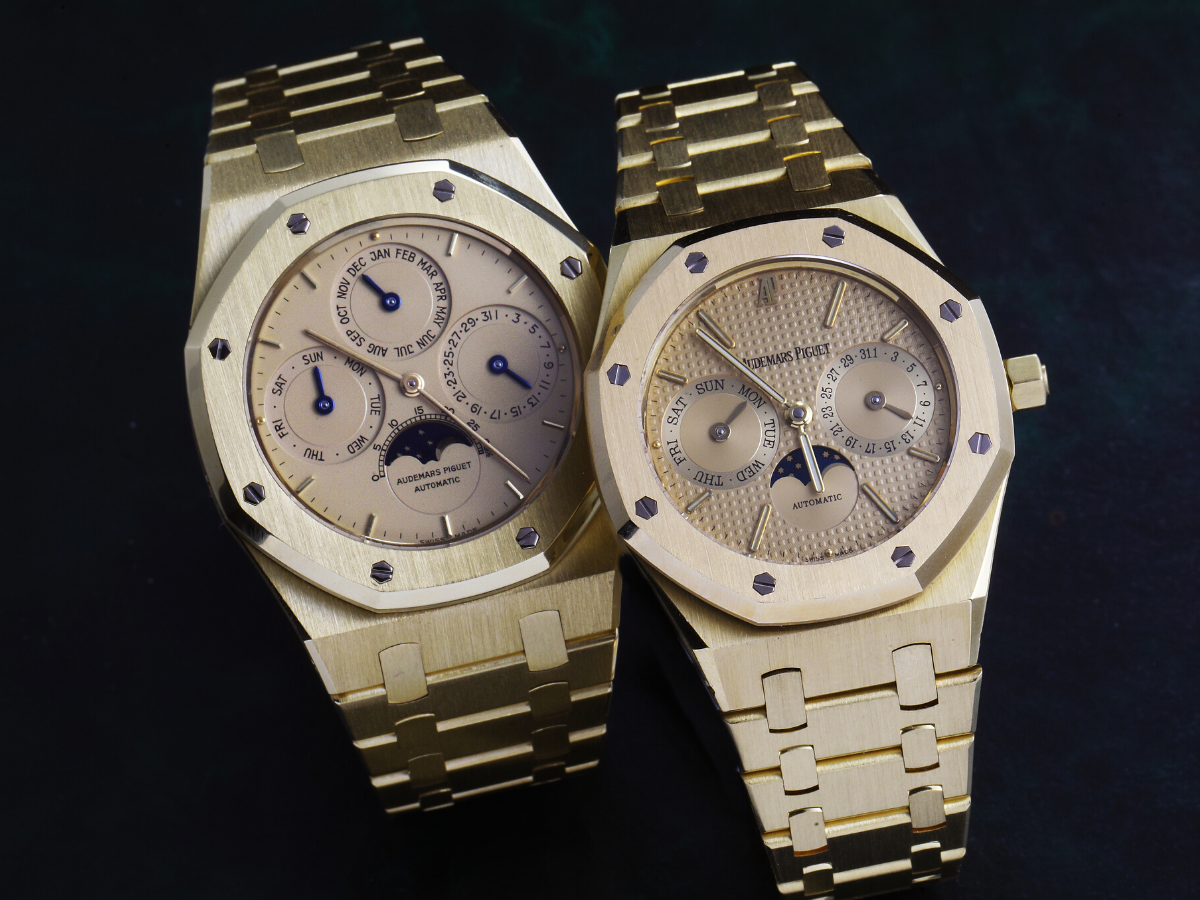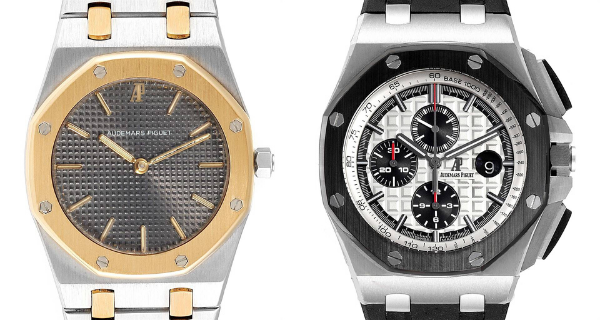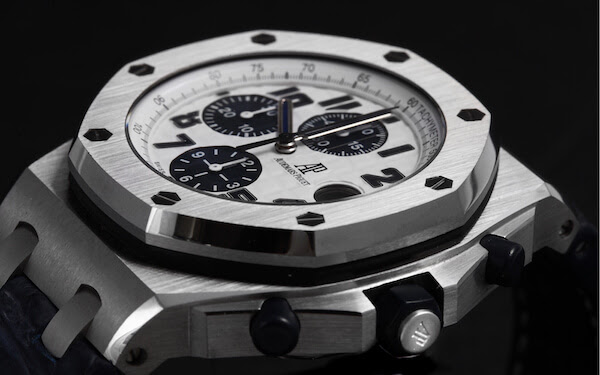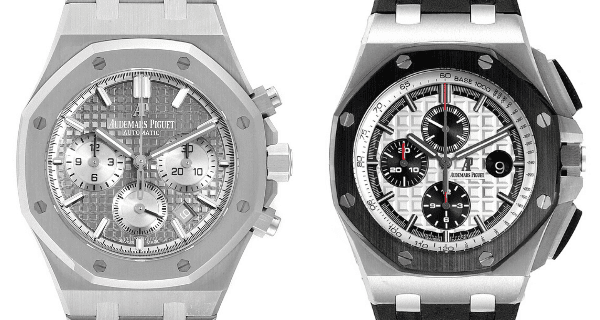AP Royal Oak VS Royal Oak Offshore|
When it comes to the Audemars Piguet brand, one watch immediately comes to mind – the octagonal bezeled Royal Oak. Launched in 1972, the Royal Oak broke the watch codes of the era; and went on to define the luxury sport watch genre. Two decades after, Audemars Piguet once again made a radical move by creating a larger, louder and more aggressive take on the now iconic Royal Oak – the Royal Oak Offshore. Designed to suit the tastes of sport enthusiasts and the younger set, the Offshore was also met with a lot of hesitation; but turned out to be a great success. What’s the difference between the Royal Oak and Royal Oak Offshore and which model should you choose? Here’s a quick guide to Audemars Piguet’s flagship models: |
|
Audemars Piguet Royal Oak vs Audemars Piguet Royal Oak Offshore |
|
Audemars Piguet Royal Oak: The OriginalThe history of the Audemars Piguet Royal Oak is well-documented. During the Quartz crisis of the 1970s, Swiss watch companies faced tough competition from more accurate and mass produced quartz watches. Audemars Piguet knew that they had to make a daring and revolutionary move in order to stay afloat. They launched the Royal Oak – a sporty yet elegant timepiece unlike anything the watch world has seen before. |
|
Classic Audemars Piguet Royal Oak Watches in steel, gold, and tantalum |
|
Created by renowned watch designer Gerald Genta, the Royal Oak was a watchmaking pioneer in many aspects: |
|
– the use of finished stainless steel, instead of the usual gold or platinum
– a massive 39mm case, which was huge for its time
-the octagonal bezel design, instead of the usual round or rectangular shapes
– and the integrated bracelet that eschewed the usual lug-and-spring.
The Royal Oak’s approach also defined a whole new category of watches – the stainless steel luxury sports watch – which inspired the countless sports watches that followed. While it was initially met with a disconcerted market, it enjoyed immense success and is considered one of the most iconic watches ever. |
|
Audemars Piguet Royal Oak Offshore Navy Blue Chronograph |
|
Royal Oak Offshore: The Royal Oak ReimaginedIn 1989, Audemars Piguet decided that it was time to bring in a new audience for the brand. Targeting sport enthusiasts and younger watch collectors, they commissioned designer Emmanuel Gueit to reimagine the classic Royal Oak. After four years of development, the company launched the Royal Oak Offshore – a larger, louder, and decidedly sportier version of the Royal Oak. Knowing that it would be disastrous to simply tweak the near perfect design of the Royal Oak, Gueit went for an overtly sporty, utilitarian and masculine design. |
|
Audemars Piguet Royal Oak Offshore and Offshore Chronographs |
|
The Offshore had its own share of critics – from watch industry insiders who nicknamed it “The Beast” to Gerald Genta who reportedly stormed the BaselWorld booth to express his disappointment. However, as with the Royal Oak, the outrage eventually faded and slowly turned into popularity. The Beast, as it turns out, would go on to be a huge commercial success for the company – even paving the way for the use of other novel materials in watchmaking, such as ceramic or carbon fibre. Today, the Royal Oak Offshore stands alongside the Royal Oak as the main offering of Audemars Piguet. |
|
Royal Oak vs Royal Oak Offshore: What’s the Difference?It’s quite easy to spot the difference between the two models – the Royal Oak is more classic in design, while the Offshore is more robust and sporty. Here are three more aspects to look at in deciding between the two: |
|
Audemars Piguet Royal Oak Chronograph and Offshore Chronograph |
|
Size. The Royal Oak has a 41mm case, while the Royal Oak Offshore measures 42mm. The Offshore is also thicker at 14.90mm, compared to the Royal Oak’s approximately 10.88mm thickness. Dial. Both designs have a “waffle” or tapisserie dial, but their sizes differ. The Royal Oak features smaller squares called Grande Tapisserie, while the Royal Oak Offshore sports larger squares, called Mega Tapisserie patterns. Chronographs. The Royal Oak’s chronograph sub-dials are located at 3, 6 and 9 o’clock positions, while the Offshore’s chronograph sub-dials are placed at 6, 9 and 12 o’clock. |
|
| ____ SEE MORE OF THE WATCHES IN OUR VIDEO: ____ |
|







![Audemars Piguet Royal Oak vs Royal Oak Offshore Comparison | SwissWatchExpo [Watch Guides]](https://i.ytimg.com/vi/wMy_09IeJCA/sddefault.jpg)
